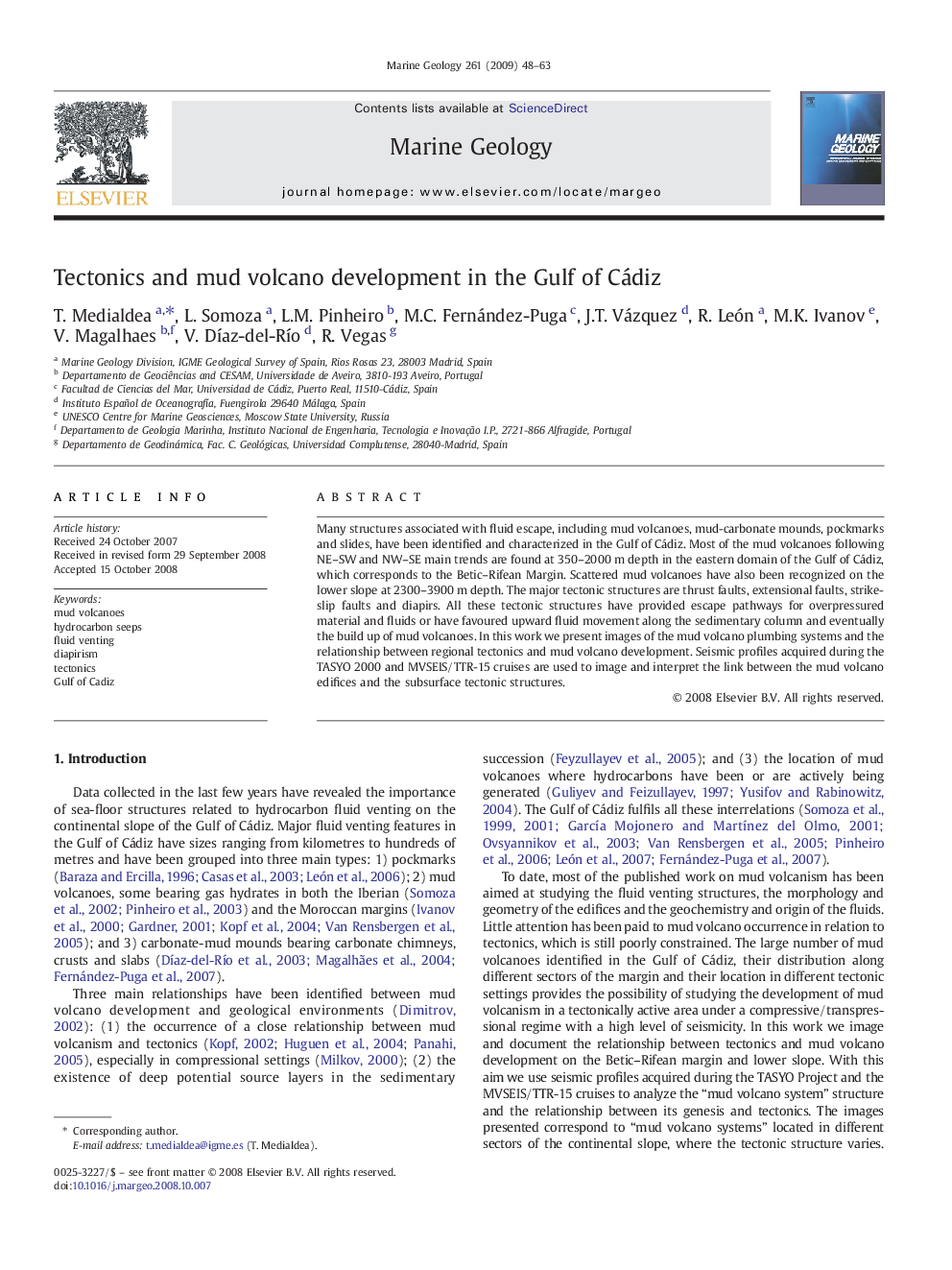| Article ID | Journal | Published Year | Pages | File Type |
|---|---|---|---|---|
| 4719106 | Marine Geology | 2009 | 16 Pages |
Many structures associated with fluid escape, including mud volcanoes, mud-carbonate mounds, pockmarks and slides, have been identified and characterized in the Gulf of Cádiz. Most of the mud volcanoes following NE–SW and NW–SE main trends are found at 350–2000 m depth in the eastern domain of the Gulf of Cádiz, which corresponds to the Betic–Rifean Margin. Scattered mud volcanoes have also been recognized on the lower slope at 2300–3900 m depth. The major tectonic structures are thrust faults, extensional faults, strike-slip faults and diapirs. All these tectonic structures have provided escape pathways for overpressured material and fluids or have favoured upward fluid movement along the sedimentary column and eventually the build up of mud volcanoes. In this work we present images of the mud volcano plumbing systems and the relationship between regional tectonics and mud volcano development. Seismic profiles acquired during the TASYO 2000 and MVSEIS/TTR-15 cruises are used to image and interpret the link between the mud volcano edifices and the subsurface tectonic structures.
